Introduction

Ever wondered why your morning cup tastes so different from your friend’s, even if you both use the same brewing method? The secret often lies in the roast level. From the bright acidity of a light roast to the smoky boldness of a dark roast, the degree to which coffee beans are roasted dramatically transforms their flavor. This blog will be your guide to understanding the nuances of light, medium, and dark roasts, helping you discover your perfect cup.
Roast Degree & Bean Degradation
The Maillard reaction, a crucial process in coffee roasting, is a complex series of chemical reactions between amino acids and reducing sugars. This reaction, initiated at approximately 140°C (284°F), is responsible for the development of much of coffee’s characteristic aroma and flavor compounds. However, exceeding optimal roasting temperatures, especially beyond the first crack, leads to increased degradation of desirable compounds. Pyrolysis, the thermal decomposition of organic matter, begins to dominate at higher temperatures, leading to the formation of bitter and acrid compounds that can mask nuanced flavor profiles.
“The roast level is the alchemy of coffee, transforming beans into a spectrum of flavors from bright to bold.”
– James Hoffmann, World Barista Champion and Coffee Expert
Introduction
1. Understanding Coffee Roast Levels
1.1 What is Coffee Roasting?
1.2 Light Roast
1.3 Medium Roast
1.4 Dark Roast
2. How Roast Levels Impact Flavor
2.1 Single-Origin vs Blends
2.2 Roast Profiles and Flavor Development
2.3 Brewing Methods for Each Roast
3. Tools, Materials, and Skills for Brewing
3.1 Essential Tools
3.2 Materials
3.3 Key Skills
4. Best Practices for Brewing Each Roast
4.1 Grinding Tips
4.2 Water Temperature
4.3 Brew Time
5. Common Challenges and Solutions
5.1 Light Roast Challenges
5.2 Medium Roast Challenges
5.3 Dark Roast Challenges
6. Benefits and Considerations of Each Roast
6.1 Light Roast
6.2 Medium Roast
6.3 Dark Roast
7. Expert Recommendations and Real-World Examples
8. Related Topics and Applications
Conclusion
External Links
Your Perfect Cup Awaits: Embrace the Roast
- The Maillard reaction peaks around 200°C (392°F), creating desirable flavors before degradation starts.
- Over-roasting leads to pyrolysis, producing bitter compounds like acrylamide and reducing caffeine content.
- Optimal roast levels depend on the bean’s origin and variety; some handle darker roasts better than others.
- Acidity decreases as roast level increases, with lighter roasts being typically more acidic.
- Visual cues like bean color (from light tan to dark brown/black) indicate roast level and the stage of chemical changes.
- Different roast levels highlight diverse flavor notes; lighter roasts showcase origin characteristics while darker roasts are bolder.
| Roast Level | Flavor Profile | Acidity | Bean Color |
|---|---|---|---|
| Light Roast | Bright, acidic, origin characteristics | High | Light tan |
| Medium Roast | Balanced, nuanced flavors | Moderate | Medium brown |
| Dark Roast | Bold, smoky, bitter | Low | Dark brown/black |
1. Understanding Coffee Roast Levels

Roast Development Time Analysis
Precise control over roast development time is crucial for achieving consistent and predictable roast levels. This parameter, measured from the first crack to the end of the roast, directly impacts the final bean characteristics. Variations of even 30 seconds can significantly alter the cup profile, influencing acidity, bitterness, and overall sweetness. Monitoring development time requires careful observation of bean color changes, coupled with the use of a reliable roast timer – ideally, one with a tenth-of-a-second precision, such as those integrated into commercial roasters like the Diedrich IR-12 or Probat UG22. Consistent development time, when paired with other roast parameters (charge temperature, airflow, and bean mass), enables roasters to create reproducible roasts across batches.
“The art of coffee roasting lies in balancing heat and time to unlock the bean’s unique story–light for brightness, dark for depth, and medium for harmony.”
– National Coffee Association, Coffee Roasting Experts
- Development time is measured from first crack to the end of roasting, impacting final flavor significantly.
- Even slight variations (e.g., 30 seconds) can drastically alter acidity, bitterness, and sweetness.
- Accurate timing requires combining visual bean color assessment with a precise timer (0.1-second precision recommended).
- Consistent development time contributes to batch-to-batch roast reproducibility, crucial for quality control.
- Different roast levels (light, medium, dark) necessitate varying development times to achieve desired flavor profiles.
- Factors like bean origin and density influence optimal development time; adjust accordingly.
2. How Roast Levels Impact Flavor
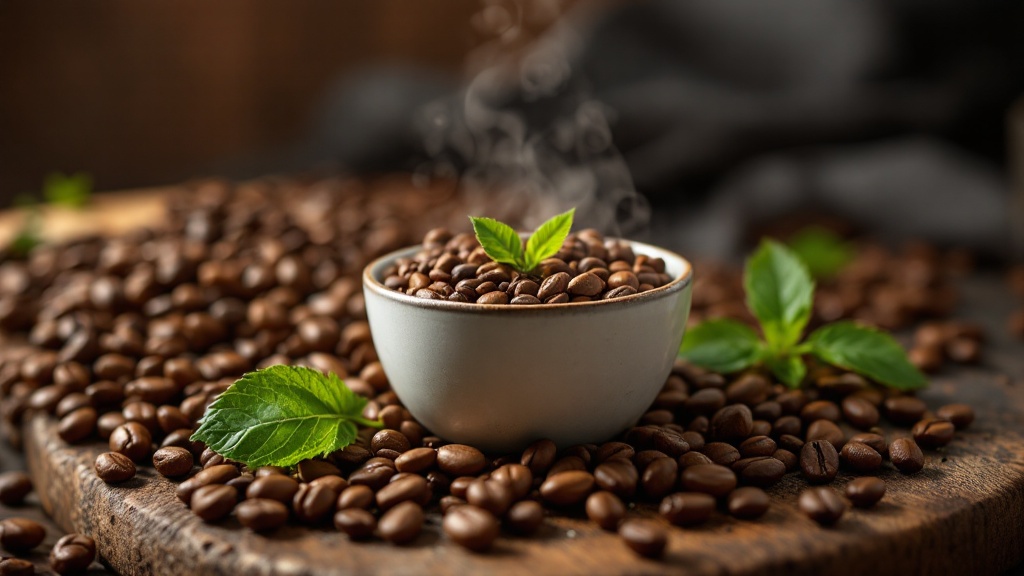
Maillard Reaction Kinetics
The Maillard reaction, a key contributor to roast flavor development, is significantly influenced by roasting parameters. Specifically, the reaction rate is highly temperature-dependent, following Arrhenius kinetics. The equation, k = A * exp(-Ea/RT), where k is the rate constant, A is the pre-exponential factor, Ea is the activation energy, R is the gas constant, and T is the absolute temperature, demonstrates this relationship. Higher roasting temperatures accelerate the reaction, leading to a faster formation of melanoidins, which contribute to the characteristic dark color and complex flavor profile of darker roasts. Conversely, lower temperatures result in slower reaction rates, yielding lighter roasts with less intense flavors.
- The activation energy (Ea) varies depending on the specific reactants involved (e.g., different sugars and amino acids).
- Water activity significantly impacts the reaction rate; lower water activity generally slows it down.
- pH also plays a role; slightly alkaline conditions often favor faster Maillard reactions.
- Besides temperature, reaction time is crucial; longer roasting times at lower temperatures can still achieve similar Maillard reactions as shorter times at higher temperatures.
- Understanding Maillard kinetics is vital for controlling roast color and flavor profiles in coffee, chocolate, and bread production.
3. Tools, Materials, and Skills for Brewing
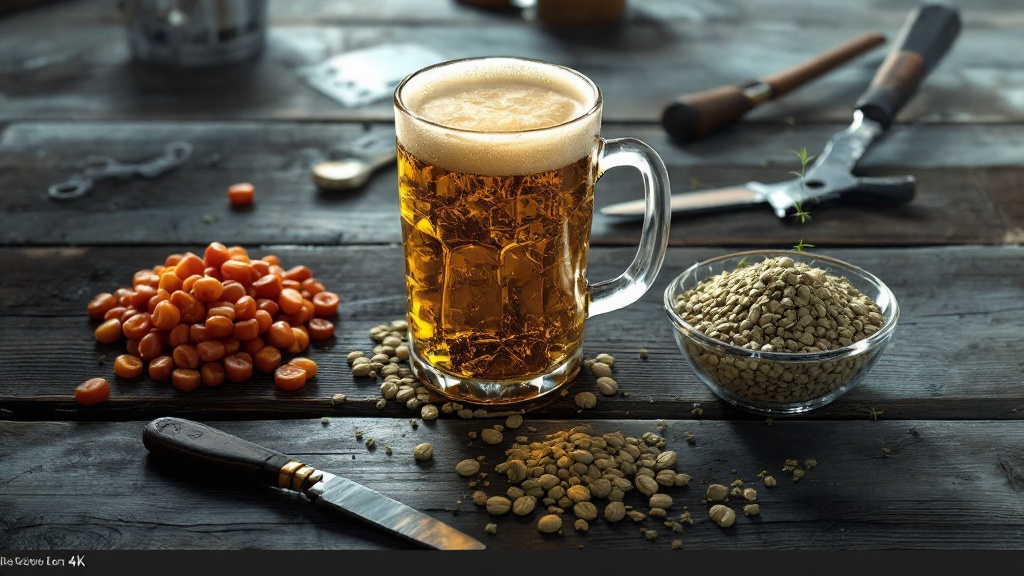
Thermometer Calibration for Mashing
Accurate temperature control is paramount during the mashing process, directly impacting enzymatic activity and ultimately, the final beer’s character. Deviations of even a few degrees Celsius can significantly alter the conversion of starches to fermentable sugars, resulting in variations in body, sweetness, and overall flavor profile. Therefore, regular calibration of the thermometer used for mashing is crucial. A digital thermometer with a resolution of at least 0.1°C is recommended for precision. Calibration should be performed against a known standard, such as an ice bath (0°C) or boiling water (100°C at standard atmospheric pressure). For the ice bath method, place the thermometer probe in a mixture of crushed ice and distilled water, ensuring the probe is fully submerged and not touching the container. Allow the reading to stabilize and note the displayed temperature. Any significant deviation from 0°C indicates the need for adjustment, usually achievable via a calibration screw located on the thermometer’s body (refer to the manufacturer’s instructions).
- Use distilled water for ice bath calibration to avoid impurities affecting accuracy.
- Boiling water calibration should be performed at sea level; adjust for altitude if necessary.
- Document calibration results and dates for future reference and troubleshooting.
- Consider investing in a thermometer with NIST-traceable calibration for higher accuracy.
- Regularly check for probe damage which can affect readings.
- If significant adjustments are needed, consult your thermometer’s manual or contact the manufacturer.
4. Best Practices for Brewing Each Roast
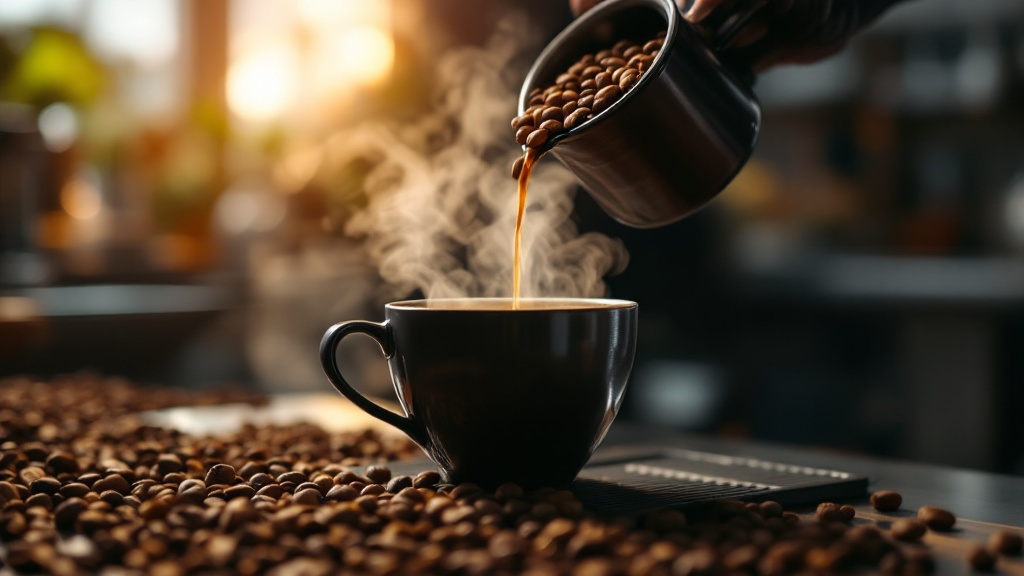
Optimal Water-to-Coffee Ratio
Achieving the ideal extraction yield in brewed coffee is critically dependent on the precise water-to-coffee ratio (WCR). This ratio significantly impacts the final cup’s flavor profile, body, and overall quality, especially when considering the varied characteristics of different roast levels. Generally, a range of 15:1 to 18:1 (grams of water to grams of coffee) is considered a good starting point for most brewing methods. However, this should be adjusted based on the specific roast level and the desired strength. Darker roasts, with their increased surface area and potentially higher density, might benefit from a slightly lower WCR (e.g., 15:1) to prevent over-extraction and bitterness, resulting in a more balanced cup. Conversely, lighter roasts, which tend to require longer extraction times due to their denser structure, might need a higher WCR (e.g., 17:1 or even 18:1) to ensure sufficient extraction of desirable flavors without sacrificing clarity.
5. Common Challenges and Solutions

6. Benefits and Considerations of Each Roast
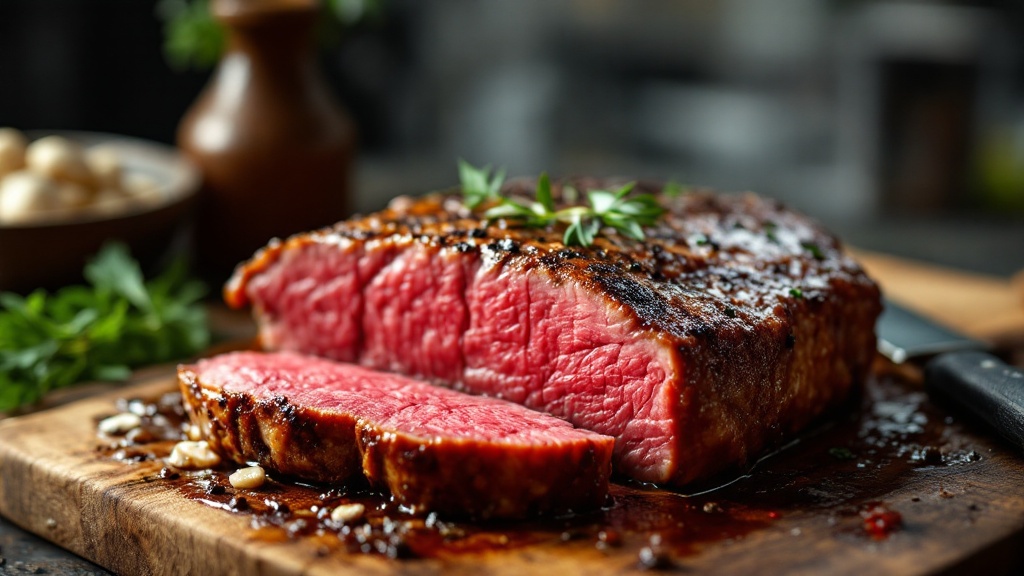
Roast Degree & Maillard Reaction
The Maillard reaction, a crucial chemical process in coffee roasting, is significantly influenced by the final roast degree. This reaction, a non-enzymatic browning, involves the reaction between reducing sugars and amino acids, generating hundreds of volatile and non-volatile compounds responsible for the characteristic aroma and flavor profiles of roasted coffee. The extent of the Maillard reaction is directly correlated with the roast level; lighter roasts exhibit a less developed Maillard reaction, resulting in a brighter acidity and a more pronounced green coffee flavor profile. Conversely, darker roasts undergo a more extensive Maillard reaction, leading to a decrease in acidity and the development of more pronounced bitter and smoky notes, along with potentially pyrazines and furans.
- The reaction’s speed increases exponentially with temperature, accelerating rapidly in the later stages of roasting.
- Beyond the Maillard reaction, caramelization of sugars also contributes significantly to darker roast flavor profiles.
- Specific compounds formed, such as furfurals and pyrazines, are heavily influenced by roast degree, contributing to distinct flavor notes.
- Acidity reduction in darker roasts is partly due to the Maillard reaction consuming acidic compounds.
- The type of beans (Arabica vs. Robusta) can affect the Maillard reaction rate and the resulting flavor compounds.
7. Expert Recommendations and Real-World Examples

James Hoffmann
recommends experimenting with light roasts to appreciate origin characteristics, comparing them to experiencing the terroir of a fine wine.
Scott Rao
suggests medium roasts for beginners due to their balance and versatility, much like a well-rounded house blend.
Barista Hustle
advocates for dark roasts in espresso-based drinks, noting their bold flavors complement milk’s sweetness like a dark chocolate mocha.
Roast Degree & Flavor Profile
The relationship between coffee bean roast degree and resulting flavor profile is complex, influenced by bean origin, processing method, and roasting parameters. Hoffmann’s recommendation of light roasts emphasizes the preservation of origin characteristics. Light roasts, typically achieving a first crack temperature range of approximately 375-400°F (190-204°C), retain more of the bean’s inherent acidity and nuanced flavor notes. These characteristics are analogous to the terroir expression in wine, where soil composition, climate, and grape varietal directly influence the final product. For example, a naturally processed Ethiopian Yirgacheffe, roasted light, might exhibit bright citric acidity, floral aromatics, and delicate tea-like notes, all largely preserved due to the limited heat exposure during roasting.
8. Related Topics and Applications
Coffee Origins:
Explore how the bean’s origin influences its flavor profile, much like how different regions produce distinct wines.
Brewing Science:
Dive into extraction principles for optimizing flavor, just as a chef understands how different cooking methods affect a dish.
Coffee Bean Varieties:
Discover the nuances of different coffee bean varietals like Arabica and Robusta and how they affect roast profiles.
Grinder Technology:
Learn about the different types of grinders and their impact on coffee flavor extraction based on roast level.
Cupping and Sensory Analysis:
Develop your coffee palate to distinguish between different roasts and origins, like a wine sommelier.
Conclusion

From the vibrant acidity of light roasts to the smoky depth of dark roasts, the world of coffee roasting offers a diverse range of flavors. Experiment with different roast levels and brewing methods to unlock your personal coffee preferences. Store your beans in an airtight container away from light and heat, and grind just before brewing to preserve maximum freshness.
Bean Storage & Degassing
Proper storage significantly impacts coffee freshness and flavor profile post-roasting. The immediate post-roasting period involves a crucial degassing phase where carbon dioxide (CO2), a byproduct of the roasting process, is released. This CO2 can negatively affect extraction during brewing, leading to uneven flavor development and potentially sour or acidic notes. Optimal storage minimizes CO2 retention and oxidation, preserving volatile aromatic compounds. Airtight containers, ideally those constructed from food-grade materials like stainless steel or BPA-free plastics, are essential. The container should be opaque to prevent exposure to ultraviolet (UV) light, which can accelerate oxidation and degrade flavor compounds. Glass jars, while aesthetically pleasing, are not recommended unless they are UV-protected, as they readily transmit UV light.
National Coffee Association (NCA)
Specialty Coffee Association (SCA)
Coffee Research Institute
James Hoffmann’s *The World Atlas of Coffee*
Scott Rao’s *The Coffee Roaster’s Companion*
Barista Hustle
“`html
Your Perfect Cup Awaits: Embrace the Roast
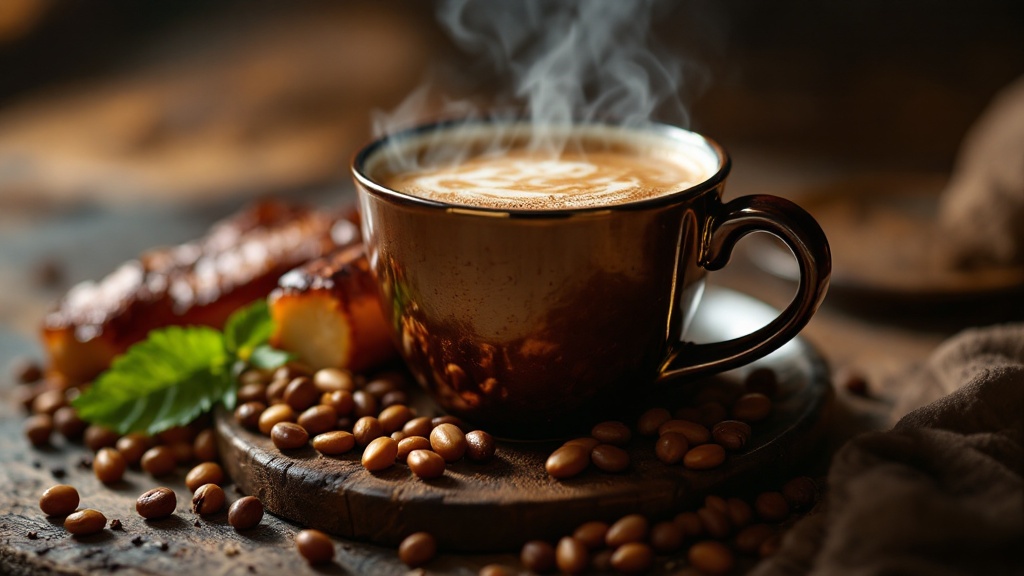
From the vibrant tang of a light roast to the deep, smoky allure of a dark roast, the world of coffee offers a spectrum of flavors waiting to be explored. Understanding the roasting process and its impact on acidity, body, and caffeine content empowers you to make informed choices and truly savor each sip. Whether you’re drawn to the bright citrus notes of a light roast or the rich chocolate undertones of a dark roast, remember that the “best” roast is simply the one that delights your palate.
This journey through the nuances of light, medium, and dark roasts has equipped you with the knowledge to navigate the coffee landscape with confidence. Consider the flavor profiles, caffeine levels, and common names discussed, and use them as your guide. Don’t be afraid to experiment and venture beyond your usual order. The perfect cup is a personal discovery, and the possibilities are as diverse as the beans themselves.
Now, armed with this newfound understanding, embark on your own coffee adventure. Head to your local roaster, browse online selections, or simply try a new roast at your favorite coffee shop. The perfect cup is out there, waiting to be discovered. Cheers to finding yours!
Roast Degree & Bean Development
The degree of roast significantly impacts the chemical composition and resulting flavor profile of coffee beans. The roasting process involves applying heat to green coffee beans, triggering a series of chemical reactions known as the Maillard reaction and caramelization. These reactions affect the bean’s moisture content, reducing it from approximately 11% in the green state to around 1-2% in a dark roast. This dehydration process concentrates flavors and contributes to the roast’s overall intensity. Simultaneously, volatile compounds-essential oils that contribute to aroma and flavor-are released, with different compounds being more prominent depending on the roast level. For example, lighter roasts preserve more of the bean’s inherent acidity and origin characteristics, while darker roasts exhibit more pronounced bitterness due to the formation of pyrazines and the breakdown of other compounds. The rate of development (speed of roasting) also plays a crucial role. A faster rate leads to increased production of certain volatile compounds, altering the final flavor profile compared to a slower roast of the same degree.
| Roast Level | Flavor Profile | Acidity | Caffeine Content |
|---|---|---|---|
| Light Roast | Bright citrus notes | High | Higher |
| Medium Roast | Balanced flavor | Moderate | Moderate |
| Dark Roast | Rich chocolate undertones | Low | Lower |
“`

